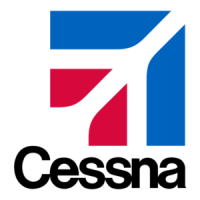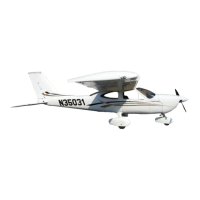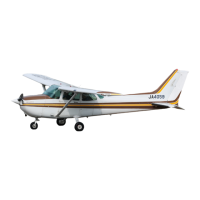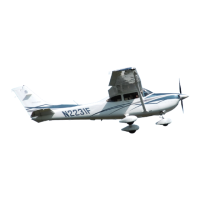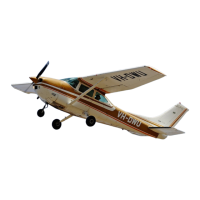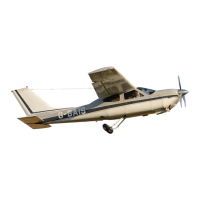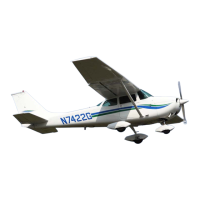Do you have a question about the Cessna 150 COMMUTER 1977 and is the answer not in the manual?
Provides an overview of the aircraft and its general characteristics.
Details engine, propeller, fuel, and oil system specifications.
Covers physical dimensions, weight limits, and loading information.
Defines key terms, symbols, and abbreviations used in the manual.
Explains the purpose and importance of the limitations section.
Defines operational speed limits and engine operating constraints.
Covers aircraft weight, balance, and flight maneuver restrictions.
Details operating constraints and fuel type/usage restrictions.
Overview of emergency operations and critical airspeeds.
Lists step-by-step procedures for various emergencies.
Details actions for engine malfunctions and forced landings.
Covers responses to fires, icing, and system failures.
Outlines normal operation and recommended flight speeds.
Details pre-flight checks and engine starting procedures.
Covers takeoff, climb, and enroute flight phases.
Explains cruise, landing, post-flight shutdown, and securing.
Explains how to use performance data charts for flight planning.
Provides takeoff distances and speeds under various conditions.
Details climb rates, cruise speeds, and fuel consumption.
Covers landing distances and speeds under various conditions.
Explains the importance of weight and balance for safe flight.
Details the process of weighing the aircraft to determine CG.
Covers calculating CG and loading for safe operation.
Lists installed equipment and their weights/arms.
Describes the aircraft structure and manual control systems.
Details the layout and function of the primary flight instruments.
Explains engine operation, cooling, and fuel system components.
Covers electrical, lighting, heating, and ventilating systems.
Overview of handling, service, and required aircraft documents.
Details inspection schedules and manufacturer maintenance procedures.
Covers towing, parking, tie-down, and jacking procedures.
Explains routine servicing, engine oil, fuel, and cleaning recommendations.
Explains the purpose of supplementary sections for optional systems.
Details the operation and emergency use of the ELT system.
Covers operation of optional navigation and communication equipment.
Provides an overview of the aircraft and its general characteristics.
Details engine, propeller, fuel, and oil system specifications.
Covers physical dimensions, weight limits, and loading information.
Defines key terms, symbols, and abbreviations used in the manual.
Explains the purpose and importance of the limitations section.
Defines operational speed limits and engine operating constraints.
Covers aircraft weight, balance, and flight maneuver restrictions.
Details operating constraints and fuel type/usage restrictions.
Overview of emergency operations and critical airspeeds.
Lists step-by-step procedures for various emergencies.
Details actions for engine malfunctions and forced landings.
Covers responses to fires, icing, and system failures.
Outlines normal operation and recommended flight speeds.
Details pre-flight checks and engine starting procedures.
Covers takeoff, climb, and enroute flight phases.
Explains cruise, landing, post-flight shutdown, and securing.
Explains how to use performance data charts for flight planning.
Provides takeoff distances and speeds under various conditions.
Details climb rates, cruise speeds, and fuel consumption.
Covers landing distances and speeds under various conditions.
Explains the importance of weight and balance for safe flight.
Details the process of weighing the aircraft to determine CG.
Covers calculating CG and loading for safe operation.
Lists installed equipment and their weights/arms.
Describes the aircraft structure and manual control systems.
Details the layout and function of the primary flight instruments.
Explains engine operation, cooling, and fuel system components.
Covers electrical, lighting, heating, and ventilating systems.
Overview of handling, service, and required aircraft documents.
Details inspection schedules and manufacturer maintenance procedures.
Covers towing, parking, tie-down, and jacking procedures.
Explains routine servicing, engine oil, fuel, and cleaning recommendations.
Explains the purpose of supplementary sections for optional systems.
Details the operation and emergency use of the ELT system.
Covers operation of optional navigation and communication equipment.
| Engine | Continental O-200-A |
|---|---|
| Horsepower | 100 hp |
| Max Takeoff Weight | 1, 600 lbs |
| Height | 8 ft 6 in |
| Cruise Speed | 109 mph |
| Rate of Climb | 670 ft/min |
| Service Ceiling | 14, 000 ft |
| Propeller | Fixed Pitch |
